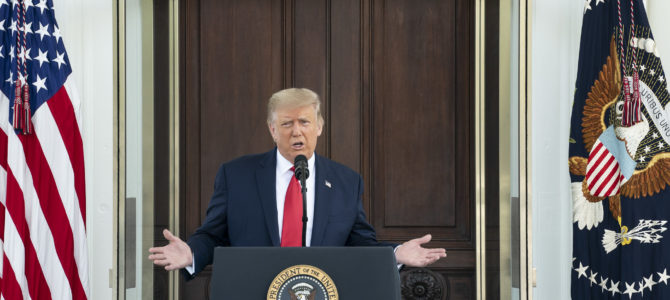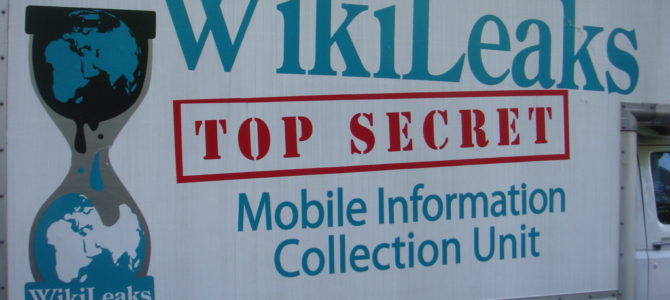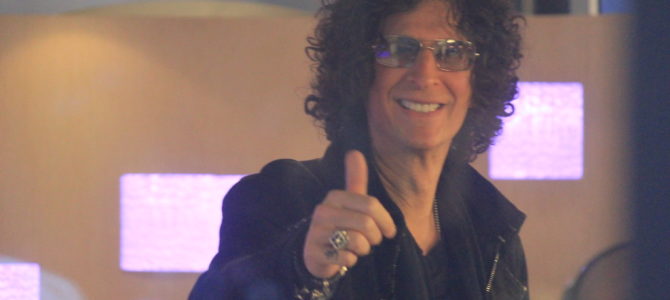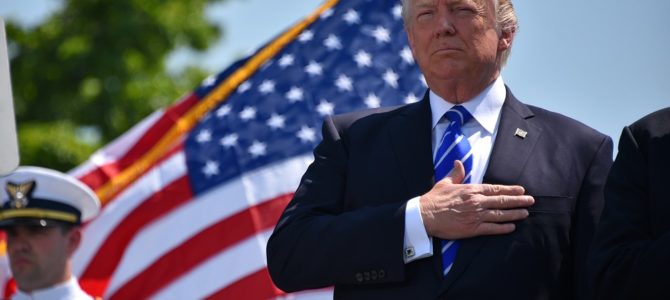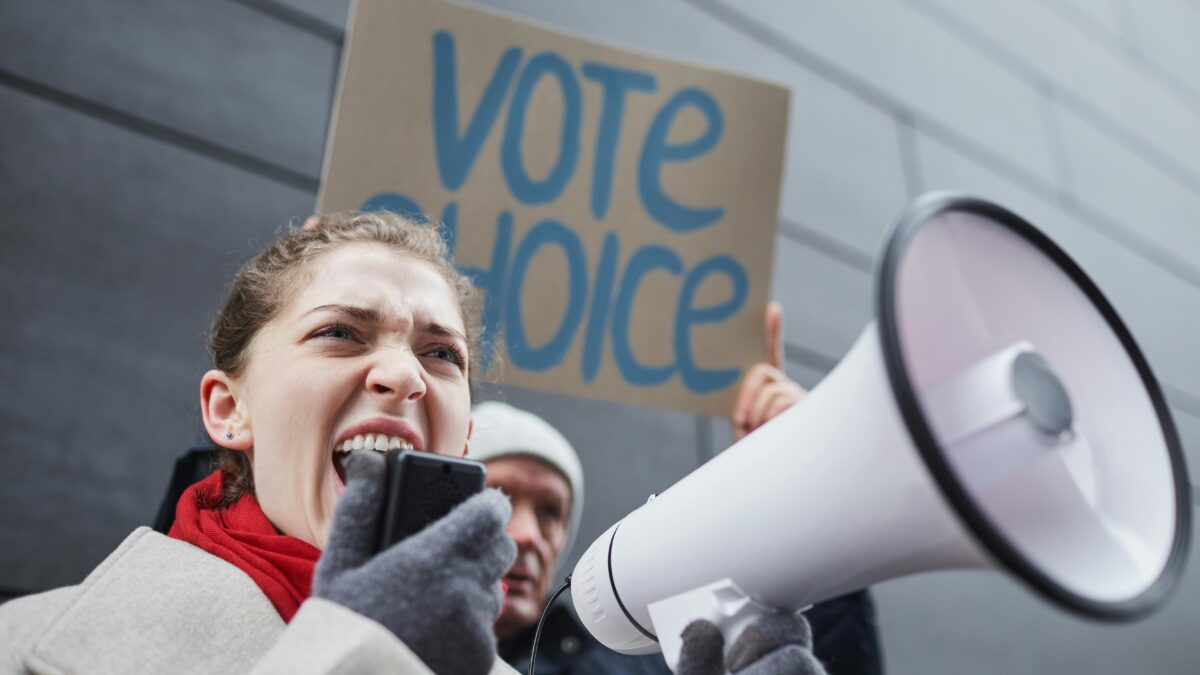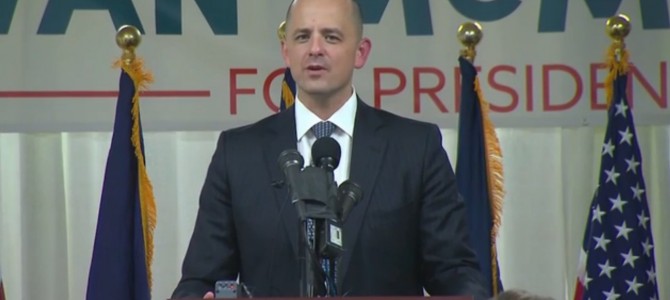
Two weeks ago, when Evan McMullin launched his bid to become what he calls the only “true conservative” running for president, he was met with amusement, skepticism, and scorn. Yet no one can accuse him of not being a serious campaigner.
The former CIA agent, Goldman Sachs banker, and Republican House policy advisor has campaigned with impressive energy. In a matter of days he went from 125 Twitter followers to more than 45,000, launched a super PAC with an experienced legal and ballot-access team, reported having more than 90,000 volunteers sign up or donate, and is rumored to be in conversation with the Kochs, Mitt Romney, and other major conservative donors.
Just five days after he declared his candidacy, he proved he could get on ballots, first in Colorado, then in Utah, Iowa, and Louisiana. He’s also garnered the endorsement of the Independence Party of Minnesota—a move that won’t secure him a ballot line there, but will boost his publicity. To all the naysayers saying it’s too late to start a presidential bid, he retorts with his de facto campaign slogan, “It’s never too late to do the right thing.”
But sometimes it is too late to win. In May I published an article crunching the data and showing how a third-party candidate might mount a successful bid for the White House. Through a process that has only happened twice in U.S. history, a third-party candidate could prevent either of the top two candidates from achieving a majority of votes in the electoral college in a so-called “contingent election,” where the outcome is then determined by the U.S. House of Representatives.
National Review described how this might happen if McMullin campaigns only in Utah. But McMullin is competing nationally. I’ve run the rest of the numbers, which show McMullin has a real chance of winning several states, but it’s close to impossible for him to win the presidency. It’s also nearly impossible that his campaign will be responsible for giving the election to Hillary Clinton.
Where Can McMullin Compete?
McMullin’s main challenge is still getting his name on state ballots. Major parties and their nominees have automatic spots there, but McMullin has no party.
According to a memorandum on his website, McMullin plans to compete nationally, with a five-point strategy. He’ll collect signatures to petition his way onto ballots as he did in Utah and Iowa; seek out the nominations of minor parties that have already secured ballot access (his Minnesota endorser, the Independence Party, is working on this); and where deadlines have passed McMullin will try to litigate his way onto the ballot, a costly maneuver with no history of success. In states where all these methods fail, McMullin intends to mount a write-in campaign. This method has worked state-wide before, but usually in small states or with very well-known candidates.
McMullin has also suggested he’s prepared to be the GOP fallback pending the “complete collapse of Donald Trump.” Partly that means banking on Trump’s nomination being revoked (an unlikely scenario that hasn’t prevented some GOP officials from dreaming), but even if the GOP kicks Trump out, it’s much likelier that party delegates would give their banner to Mike Pence, Marco Rubio, John Kasich, or another elder statesman.
McMullin’s best chance of actually getting on the ballot is still the old method of petitioning his way on, and there’s only so far that can take him. There are 10 states left whose filing deadlines for independent candidates haven’t closed (MN, ID, VA, OR, WY, ND, AZ, KY, MS, RI). The ballot access requirements for these states vary from Idaho, where a candidate needs only 1,000 signatures, to Arizona, which has the seventh-highest ballot access threshold in the country, requiring 36,000 signatures by September 9. But on the whole, it’s not too bad a list of states for McMullin. Eight require fewer signatures than the national average (about 17,000), and six require fewer than 5,000.
If we assume McMullin gets on the ballot in the eight easier states—something he failed to accomplish in Alabama, with its August 18 deadline for 5,000 signatures, and Tennessee, which only required 275 but also required him to have a running mate—he will have access to up to 51 electoral votes (MN, ID, VA, WY, ND, KY, MS, RI). Adding in the three states, Utah, Colorado, and Iowa, where he has already secured a ballot line, McMullin can compete for up to 80 electoral votes, or about 15 percent of the total.
That’s an eclectic group of states. Trump only won a majority in one of these states’ nominating contests (Rhode Island was his best state, and President Obama’s second-best state in the 2012 election). Hillary Clinton, on the other hand, won majorities in four of them, sweeping the Southern states and narrowly taking Iowa. While both major-party candidates have worked to solidify their standing with their base, the results from the primaries suggest McMullin’s chances are best in states where both of the major candidates performed poorly, primarily in the Mountain West, followed by the Midwest and the South.
Will McMullin prove the Ralph Nader “spoiler” of 2016? Not likely. McMullin appeals most to the Never Trump supporters who won’t vote for Trump, no matter what. Even if in a handful of states McMullin earns more votes than Hillary Clinton’s margin of victory, it’s far from certain those votes would otherwise have gone to Trump.
Where Will McMullin Be Competitive?
Below, I go region by region and state by state looking at the key indicators, from primary vote comparisons to past election results and current polling, to handicap the electoral outcomes.
McMullin’s Chances Are Best in the Mountain West
When Utah held its presidential primaries back in March, the total number of Not-Trump voters in the Republican primary (152,736) trounced both Trump’s total (24,864), and the combined Democratic total (76,999). Utah gave Republicans 74 percent of the vote in 2012. You could cut that total in half and it would still exceed the Democrats’ total. That’s likely what McMullin plans to do in his home state. Trump is so unpopular there that the state, which hasn’t voted for a national Democrat since 1964, is listed in many current polling predictions as merely “Leans GOP.”
Besides Utah, McMullin’s best chances come from the two neighboring states of Wyoming and Idaho. Trump had his worst showing of any state in the Wyoming caucuses, garnering only 7.2 percent of the vote. Idaho was Trump’s eighth-worst primary showing. Hillary Clinton lost both states to Bernie Sanders. Wyoming was the second-most Republican state in 2012, giving Republicans 69 percent of the vote. Idaho, the second-most Mormon state in the country, gave Republicans 65 percent of the vote in 2012 (the fourth-largest Republican victory).
A strong showing in Colorado, on the other hand, could prove counter-productive to McMullin’s cause. The state has swung between Republicans and Democrats by small margins in statewide races in the twenty-first century. Republicans need to be able to flip states like this back to the GOP column in order to keep Hillary Clinton out of the White House.
Most current polling lists Colorado—along with every other swing state—as leaning toward Hillary. While Trump seems quite capable of losing the state on his own, if McMullin were to siphon off a few percentage points, it would effectively ensure Clinton keeps this state blue. By making Colorado his first state to get on the ballot, McMullin effectively assured everyone he’s not taking the “safe state” route to avoid the Ralph Nader label. Time will tell whether this was bold or simply rash.
High Hurdles in the South
The South offers plausible but much less promising prospects for McMullin. While the “Not Trump” vote exceeded Hillary Clinton’s vote by more than 150,000 in the Virginia primaries, it trails the combined Democratic total by over 100,000. Like Colorado, Virginia also swings by narrow margins between the major parties in statewide elections. With Virginia Sen. Tim Kaine as Clinton’s running mate, it wasn’t likely Republicans could regain this state that went for Obama twice. With any leakage of the traditionally Republican vote from Trump to McMullin, the state will almost assuredly remain blue.
Louisiana is the only state, other than Rhode Island, where the Not-Trump primary total trailed Hillary Clinton’s total share of the vote in the Democratic primary. While Louisiana has trended red in recent elections, it did vote for Bill Clinton in 1996, when Ross Perot took almost 7 percent of the vote. A similar McMullin performance will likely produce similar results.
Mississippi was one of Trump’s strongest primary showings. He garnered 47 percent of the vote, and Mississippi was an early primary, before most of Trump’s rivals dropped out. While the Not-Trump total exceeded Clinton’s total in Mississippi, it did so by a margin of only 8 percent, and lost to the combined Democratic total by about 2 percent. Mississippi gave Republicans 55 percent of the vote in 2012 and hasn’t voted Democratic for president since 1976. While even a narrow split in the traditional GOP vote could give this state over to the Democrats, this would be a hard state for a Never Trump campaign to gain ground in the first place.
Kentucky’s a deeper shade of red than its Southern neighbors, giving 61 percent of the vote to Republicans in 2012 and last voting Democrat in 1996. This was also one of Trump’s stronger primary states, where he garnered more than one-third of primary voters when the field was still competitive. This means that the traditional GOP vote could split 65-35 in Kentucky and it would still give its majority to a candidate favored by traditional GOP voters. But if the traditional GOP vote is split any narrower, the state could turn blue in 2016.
Mixed Margins in the Midwest
North Dakota, with its three electors, looks most promising for McMullin. The state hasn’t voted Democratic in the presidential election since 1968. In 2012 it gave Romney 59 percent of the vote. While all but one of its unbound delegates ended up voting for Trump at the convention, early reports had shown the selection process heavily favored Ted Cruz. While they have one statewide elected Democrat left, it’s not likely this state would flip to Hillary.
The rest of the Midwest is less friendly toward McMullin. Minnesota will be an uphill battle. It was one of Clinton and Trump’s worst states in their respective caucus showings, but it’s a heavily Democratic state that hasn’t voted for a Republican in a presidential race since Ronald Reagan’s near-sweep in 1972. Trump has been polling badly here, so McMullin might actually have a better chance than his GOP rival of turning the state from Hillary Clinton; the state has a history of statewide protest votes for independent candidates, including former governor Jesse Ventura, who ran on the Minnesota Independence Party line McMullin hopes to secure.
Trump lost the nominating contest in the swing state of Iowa but Clinton did manage to win it. It has statewide Republican and Democratic officeholders and last voted Republican for president in 2004. Trump is trailing in its polls, and if McMullin’s campaign were to start picking up steam here, it might be the final nail in Trump’s coffin.
National Chances
Could McMullin pull off a contingent election? He stands a good chance at winning at least 13 electoral votes, but that would merely be moving states away from Trump and doing nothing to prevent Hillary Clinton from sweeping to the victory that is looking all the more likely every passing day.
| States Ranked by Chance of a McMullin Upset | ||
| Rank | State | Electoral Votes |
| 1 (Likely) | Utah | 6 |
| 2 | Wyoming | 3 |
| 3 | Idaho | 4 |
| 4 | North Dakota | 3 |
| 5 | Tennessee | 11 |
| 6 | Mississippi | 6 |
| 7 | Louisiana | 8 |
| 8 | Colorado | 9 |
| 9 | Iowa | 6 |
| 10 | Virginia | 13 |
| 11 | Minnesota | 10 |
| 12 (Very Unlikely) | Rhode Island | 4 |
| Based on Trump and Hillary’s strength in state primaries and past electoral results. | ||
If he convinces enough would-be Trump supporters to defect, he could contribute to Trump’s loss of 28 electors (assuming he does secure ballot access in Virginia). But that depends on how many voters are persuadable right now. The famously loyal Trump supporters won’t be turning, at least not due to anything McMullin says. Those voters whose primary concern is stopping Hillary Clinton at all costs are especially unlikely to hear his message, unless McMullin were to start miraculously outperforming Trump. If that happens it will likely be due to Trump’s “complete collapse,” rather than anything McMullin has done.
| States Ranked by Likelihood a Divided GOP Vote Could Help Hillary Clinton | |||
| Rank | State | Polling Status | Electoral Vote |
| 1 (Likely) | Iowa | Swing State | 6 |
| 2 | Virginia | Swing State (leaning Dem) | 13 |
| 3 | Colorado | Swing State (leaning Dem) | 9 |
| 4 | Louisiana | Likely GOP | 8 |
| 5 | Mississippi | Likely GOP | 6 |
| 6 | Kentucky | Strong GOP | 8 |
| 7 | North Dakota | Strong GOP | 3 |
| 8 | Minnesota | Likely Dem | 10 |
| 9 | Idaho | Very Strong GOP | 4 |
| 10 | Wyoming | Very Strong GOP | 3 |
| 11 | Utah | Very Strong GOP (traditionally) | 6 |
| 12 (Unlikely) | Rhode Island | Very Strong Dem | 4 |
| Based on Trump and Hillary’s strength in state primaries, current polling, and past electoral results. | |||
Ironically for McMullin, to have a shot at being chosen by the House of Representatives in a contingent election, he would need Trump to improve and win some key swing states where he’s currently polling badly. (Right now, the consensus among “pro pollsters” compiled by 270towin.com gives Hillary Clinton 262 likely electors, meaning she’d need just eight more from the 85 “toss-ups” and 38 “likely GOP” electors McMullin hopes to compete for). That would undermine a key premise of McMullin’s messaging, namely that Trump is the one giving the election to Hillary Clinton, his standard reply to those accusing him of doing just that.
Trump or McMullin would need to not lose a single likely GOP state and nearly sweep the swing states—able to afford to lose only New Hampshire or Iowa—in order to keep Hillary Clinton under 270. Unless McMullin can put states that are currently leaning toward Clinton in play, like Colorado, Minnesota, Virginia, or Oregon, his presence makes it no more likely that Hillary Clinton won’t be the next president of the United States.
McMullin is no fool. He knows he’s late to the campaign and much of his on-camera exuberance must stem more from a feeling of moral righteousness than from real electoral optimism. He’s commented in several interviews that he, like many others, was waiting for a more prominent principled conservative to step up as the Trump alternative, but when he saw the door closing and no one stepping forth he felt compelled to do so himself.
In that sense McMullin is a typical Never Trumper. He can’t bring himself to support Trump and isn’t swayed by the lesser-of-two-evils approach. This is why he’s not likely to have much effect on the election. The only way his candidacy could sway the election’s outcome is if he convinces Trump voters to jump ship and join him. In that effort, Trump might be his greatest ally.


